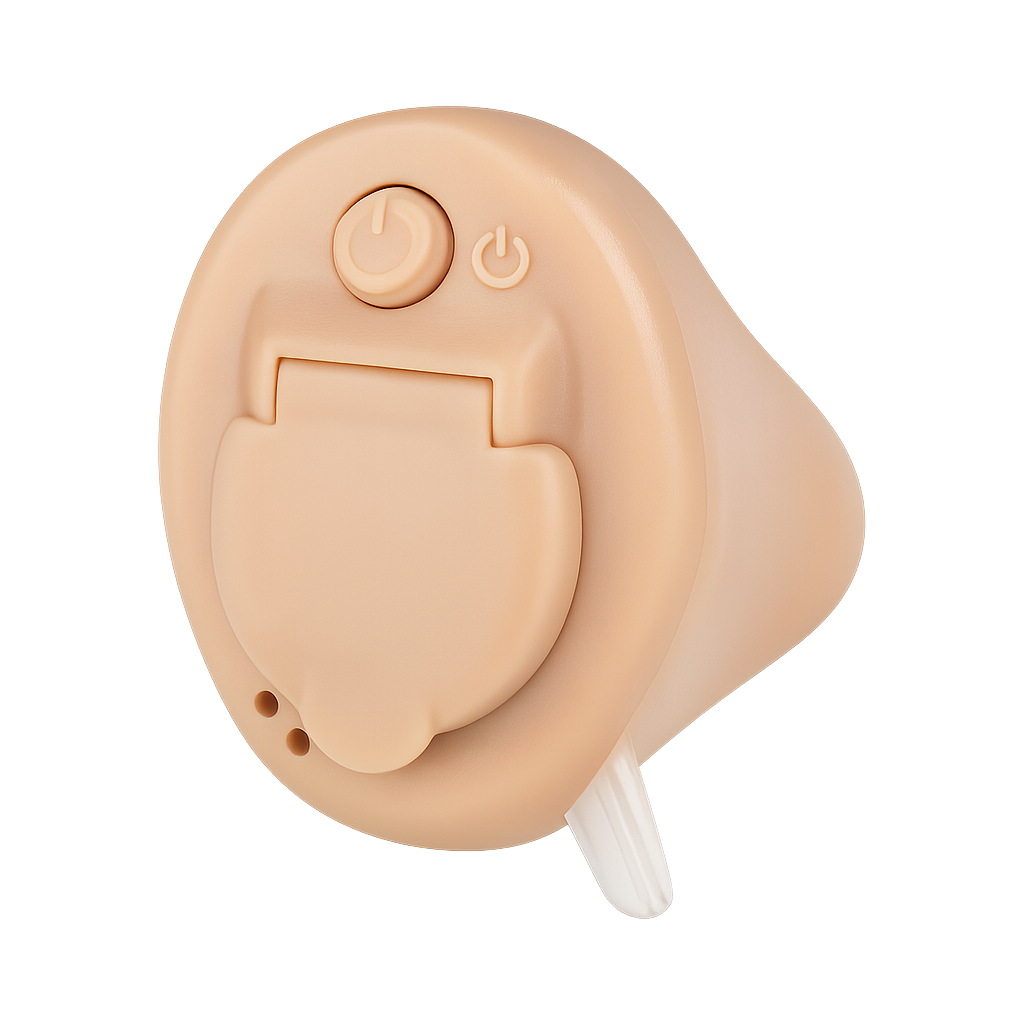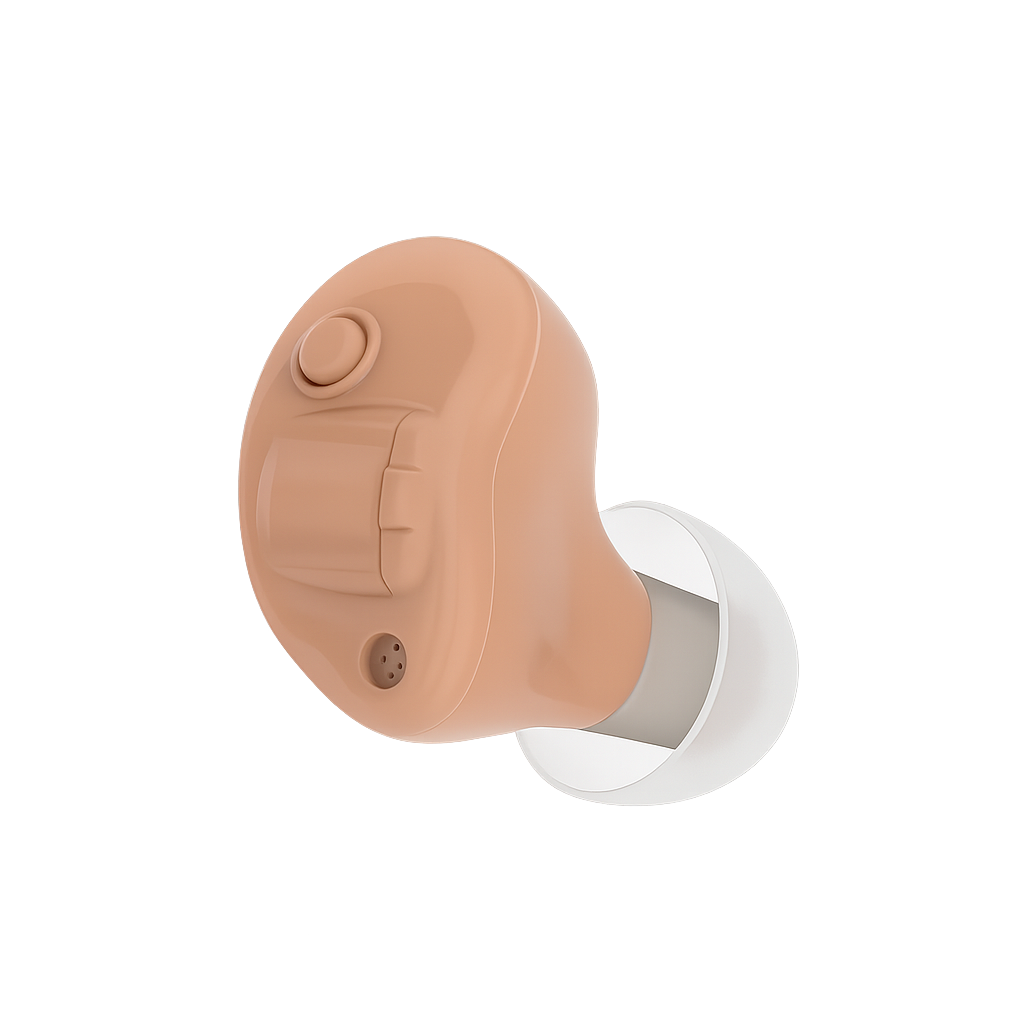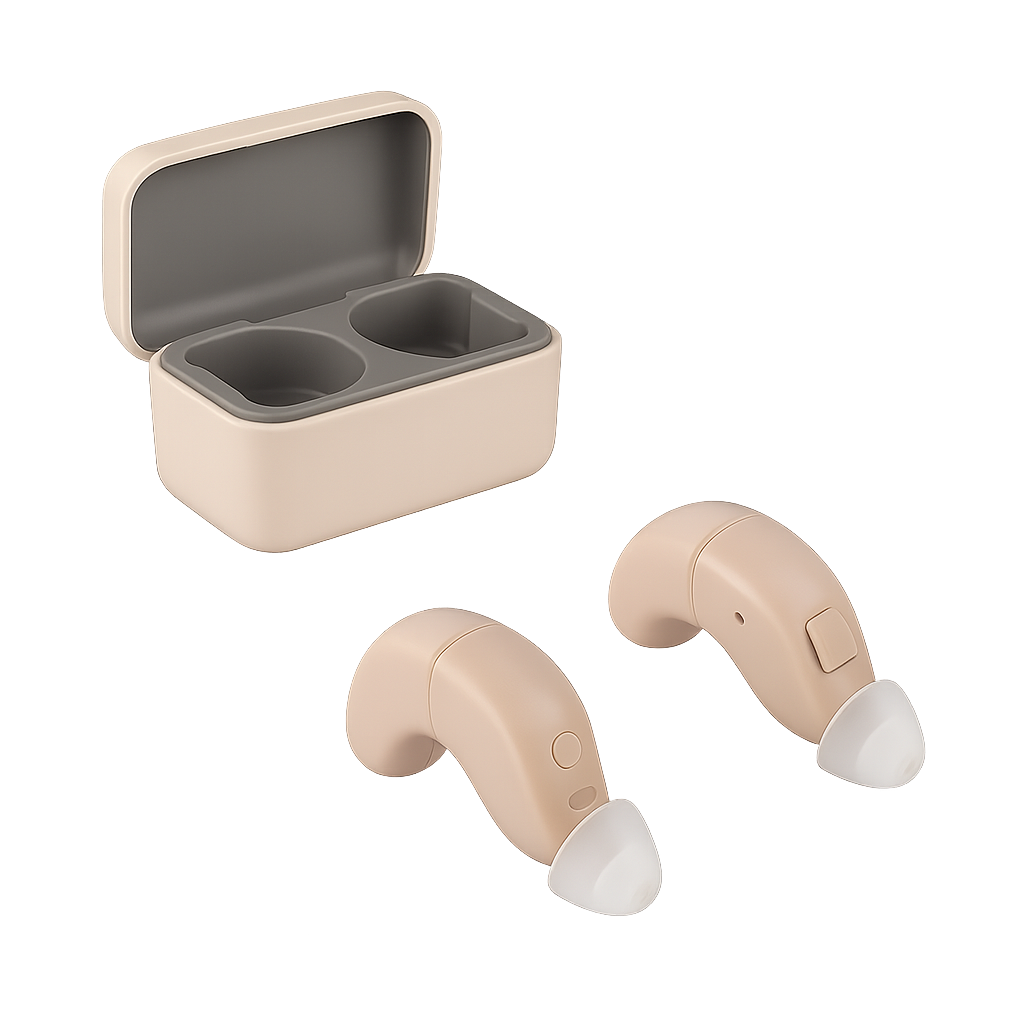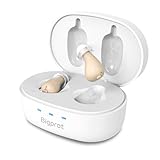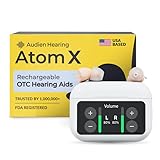Hearing aids explained: from over-the-counter to advanced devices for seniors.
Hearing loss affects millions of older adults, and for many, it begins gradually. At first it might mean turning the television up a little louder, or asking family to repeat themselves in conversation. Over time, those small adjustments can lead to frustration, withdrawal, and even safety concerns. The good news is that today’s hearing aids are more effective, comfortable, and discreet than ever before.
This guide is designed to help seniors and their caregivers understand what hearing aids can do, how to choose the right style, and what to expect once they become part of everyday life. With the right device, many seniors rediscover the joy of effortless conversation, clear sounds, and renewed independence.
Why Hearing Aids Matter?
Hearing loss doesn’t just affect the ability to hear — it touches every part of daily life. Seniors with untreated hearing difficulties are more likely to feel isolated, struggle with balance, and even experience a decline in memory and thinking skills. That’s because the brain works harder to fill in missing sounds, leaving less energy for other important tasks.
Wearing hearing aids helps reduce this strain. It restores clarity in conversations, makes social activities more enjoyable, and can even help prevent falls by improving awareness of the environment. For caregivers, the difference can be dramatic: seniors who once avoided group settings often feel more confident and willing to re-engage once their hearing is supported.
Types of Hearing Aids Seniors Can Choose
Choosing the right hearing aid depends on lifestyle, dexterity, budget, and the level of hearing loss. Here are the main types:
1. Behind-the-Ear (BTE)
- The most common style, suitable for mild to profound hearing loss.
- Sits comfortably behind the ear with a clear tube that directs sound into the ear canal.
- Easy to adjust and maintain, making it ideal for seniors with limited hand dexterity.
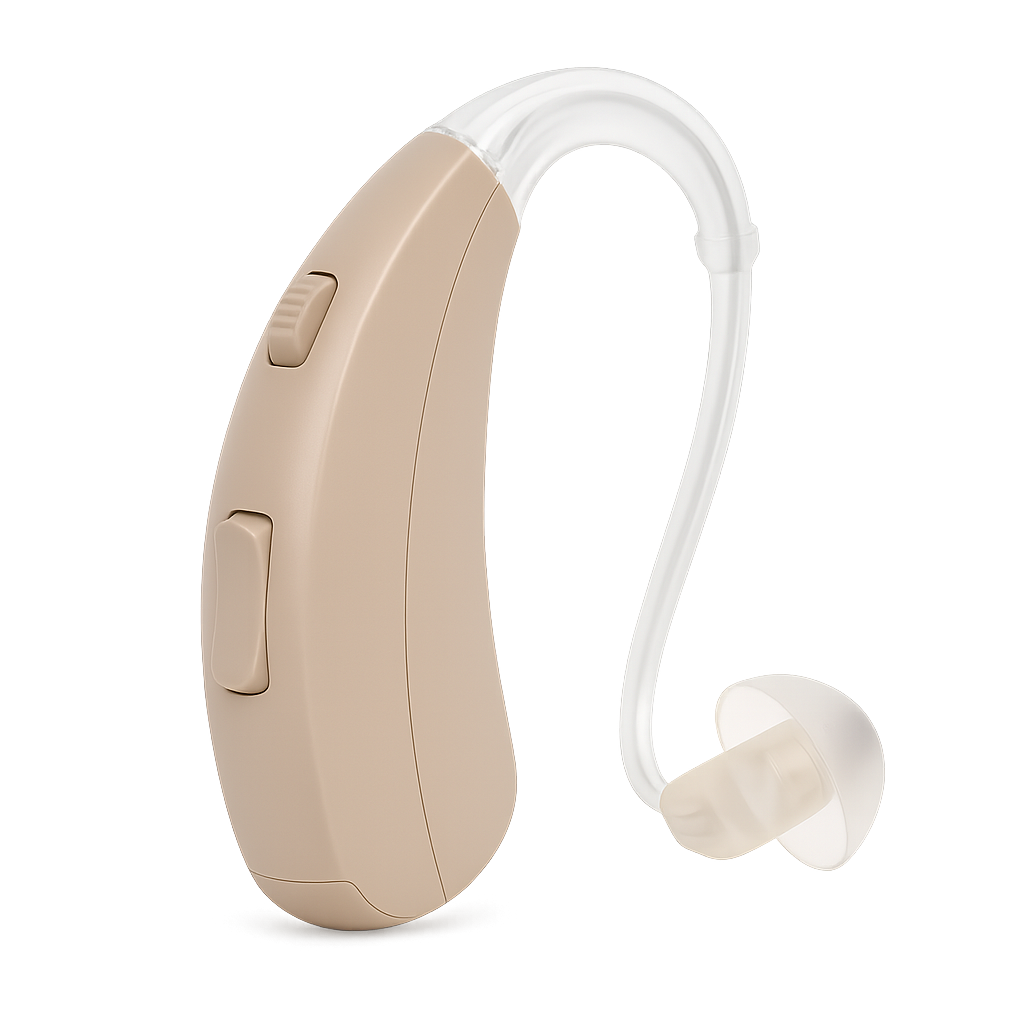
1. Behind-the-Ear (BTE)
2. In-the-Ear (ITE)
- Custom-fitted to fill the outer portion of the ear.
- Larger than in-canal options, which makes them easier to handle and adjust.
- A good choice for seniors who want something discreet but still practical.
3. In-the-Canal (ITC) & Completely-in-Canal (CIC)
- Very small and nearly invisible.
- Best for mild to moderate hearing loss.
- Can be difficult for seniors with arthritis or vision issues to insert and remove.
4. Over-the-Counter (OTC) Hearing Aids
- Recently approved by the FDA, OTC hearing aids are available without a prescription for mild to moderate hearing loss.
- They are more affordable and widely available, though not always as customizable as prescription options.
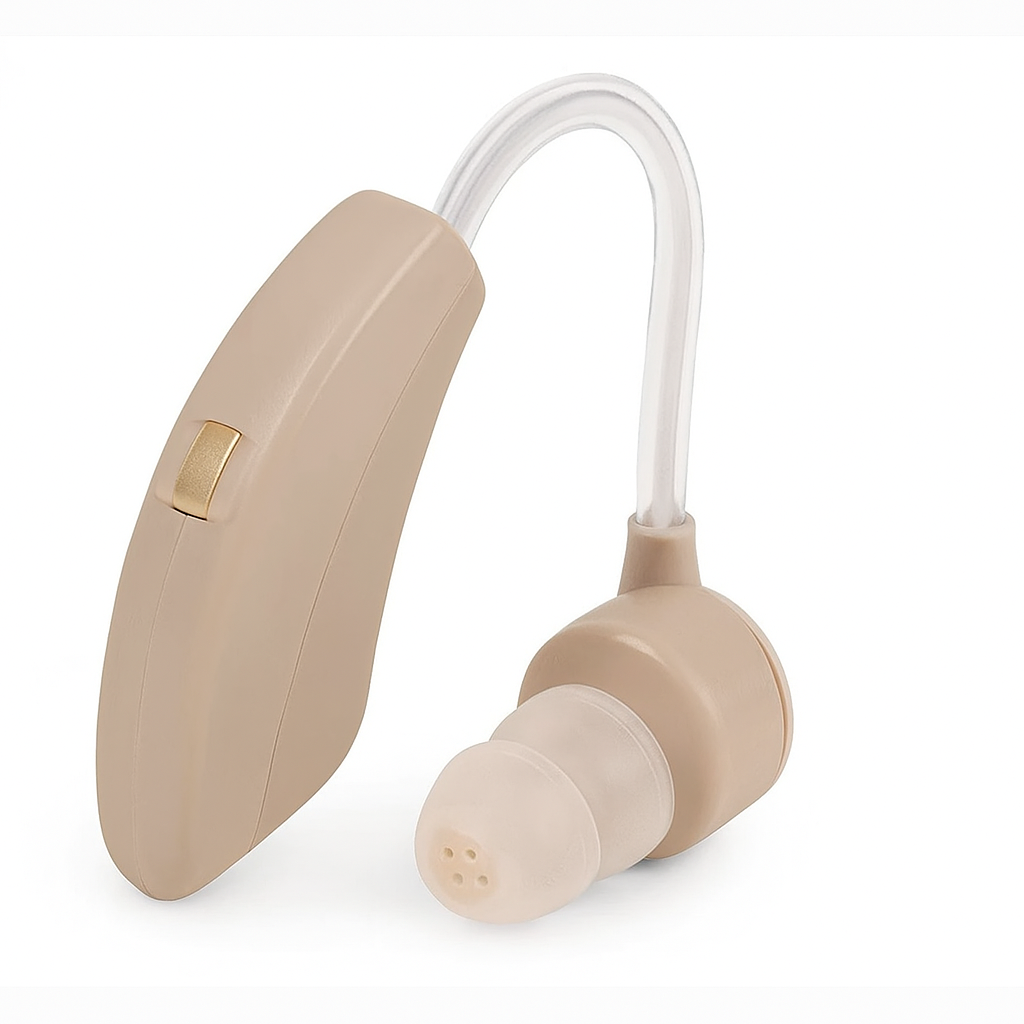
👉Rechargeable vs. Battery-Powered
Many seniors appreciate the convenience of charging them overnight, just like a phone.
Rechargeable models are increasingly popular because they eliminate the need for tiny batteries.
Key Features That Make a Difference
Modern hearing aids do much more than just make sounds louder. Many come with technology that adapts to real-life situations. For example, directional microphones can make it easier to follow conversations in noisy restaurants, while noise reduction features soften background sounds like traffic or fans.
Bluetooth connectivity allows hearing aids to connect directly to smartphones, televisions, and even music players. For seniors who enjoy phone calls with family or watching favorite shows, this feature can make a big difference.
Another feature worth considering is the telecoil, or T-coil, which helps users hear clearly in places with hearing loop systems, such as churches, theaters, or auditoriums. For those who attend community events or religious services, this feature can restore confidence in public spaces.
🌀Clearing Up Common Myths
Many seniors are hesitant to try hearing aids because of outdated beliefs. One common myth is that they make everything uncomfortably loud. In reality, modern devices are carefully tuned to amplify speech while minimizing unnecessary noise.
Another misconception is that only people with severe hearing loss benefit from hearing aids. In fact, using them early can slow the progression of hearing decline and make it easier to adjust.
Appearance is also a concern for some, who may imagine bulky, obvious devices. Today’s hearing aids are smaller, lighter, and more discreet than ever before. In many cases, they are nearly invisible.
Finally, some worry that hearing aids are too complicated to operate. While earlier models required constant manual adjustments, many of today’s devices adjust automatically to changing environments, and others can be managed with simple smartphone apps.
Costs, Insurance, and Financial Help
The cost of hearing aids often creates hesitation, but understanding the options can ease concerns. Prices typically range from $1,000 to $6,000 per pair depending on the technology. Medicare does not cover hearing aids directly, though some Medicare Advantage plans and private insurance providers may offer partial benefits. Veterans can often access free or low-cost devices through VA healthcare programs.
Seniors and caregivers should also explore nonprofit assistance programs and community health resources. Some states provide vouchers, while retailers now sell over-the-counter hearing aids for much lower prices. Most providers offer trial periods, allowing seniors to test devices for several weeks before making a final decision.
Practical Advice for Seniors and Caregivers
Adjusting to hearing aids takes patience. At first, sounds may seem sharper or unusual, but the brain adapts quickly with regular use. Seniors should begin by wearing their hearing aids in quiet settings for short periods each day, gradually increasing the time until they feel natural.
Caregivers play an important role in this process. They can help with cleaning and storing devices properly, reminding seniors to wear them consistently, and scheduling follow-up visits for adjustments. With support, the transition often becomes smoother and more successful.
Recommended Hearing Aids for Seniors
For those exploring their options, here are several senior-friendly devices available on Amazon. These models balance comfort, reliability, and affordability, making them strong starting points for older adults and caregivers.
Rechargeable, behind-the-ear, discreet in-canal, and budget OTC models)
- Hear What Matters Most: Hearing isn’t one-size-fits-all. That’s why our adjustable frequency system lets you…
- Designed by Experts, Made for Everyday Life: This isn’t just another hearing aid. It’s created by audiologists who…
- Power That Lasts All Day: Stay effortlessly connected with up to 24 hours of battery life on a single charge. From early…
- Discreet, Comfortable, Practically Invisible: No bulk. No hassle. Just a sleek, ultra-small in-ear design that blends…
- 【Hi-Fi Sound Quality】BIGPROT features an upgraded industry-leading smart chip with AI-powered dynamic noise…
- 【Super Comfort & Invisible】BIGPROT places the highest priority on customer privacy protection and wearing…
- 【Easy to Use】BIGPROT is designed with the user in mind, featuring no complicated settings. With just a single…
- 【Ultra-Long Battery Life】Enjoy up to 20 hours of runtime on a single charge. The included charging case provides 4…
- ADVANCED LARGE CLEAR TOUCHSCREEN CONTROL – The Atom X is more than just a hearing aid, it’s an advanced listening…
- EASY TO HEAR SOUND QUALITY – Hearing smarter because it’s simpler. Atom X uses advanced A2 TM Max processing to…
- DISCREET DESIGN & 48+ HOUR BATTERY W/ CHARGING CASE – Its discreet, low-profile design sits comfortably in the ears,…
- SEAMLESS BLUETOOTH CONNECTION – Stay connected with ease through universal Bluetooth technology. This hearing device…
When to Seek Professional Help?
Even with hearing aids, it’s important to stay alert to changes. Seniors should see a doctor or audiologist if they experience sudden hearing loss, ringing in the ears, or pain and pressure. These may indicate medical conditions that require treatment beyond amplification.
Regular checkups also ensure hearing aids remain properly adjusted. As hearing changes over time, small tuning updates can keep devices working at their best.
Conclusion
Hearing aids are more than just devices — they are tools that restore connection, communication, and confidence. For seniors, they make conversations easier, help maintain independence, and protect overall well-being. For caregivers, they reduce stress and improve relationships by removing one of the most common barriers to communication.
By understanding the types, features, and support available, families can make informed choices that truly improve quality of life. And with today’s technology, there has never been a better time to take the first step toward better hearing.
Frequently Asked Questions
1. At what age should seniors consider hearing aids?
Hearing aids are recommended whenever hearing loss begins interfering with daily life. For many, this occurs in their 60s or 70s, but early adoption can prevent further decline.
2. Are over-the-counter hearing aids good for seniors?
Yes, for those with mild to moderate hearing loss. They are more affordable and accessible, though prescription models offer more customization for severe cases.
3. How long does it take to get used to hearing aids?
Most seniors adjust within a few weeks. Starting with short daily use and gradually increasing time makes the process smoother.
4. Does Medicare cover hearing aids?
Original Medicare does not cover them, but some Medicare Advantage plans and the VA may provide coverage or financial help.
5. How can caregivers support seniors using hearing aids?
Caregivers can help with cleaning, charging, storage, and scheduling follow-up appointments. Encouragement and patience are key during the adjustment period.


